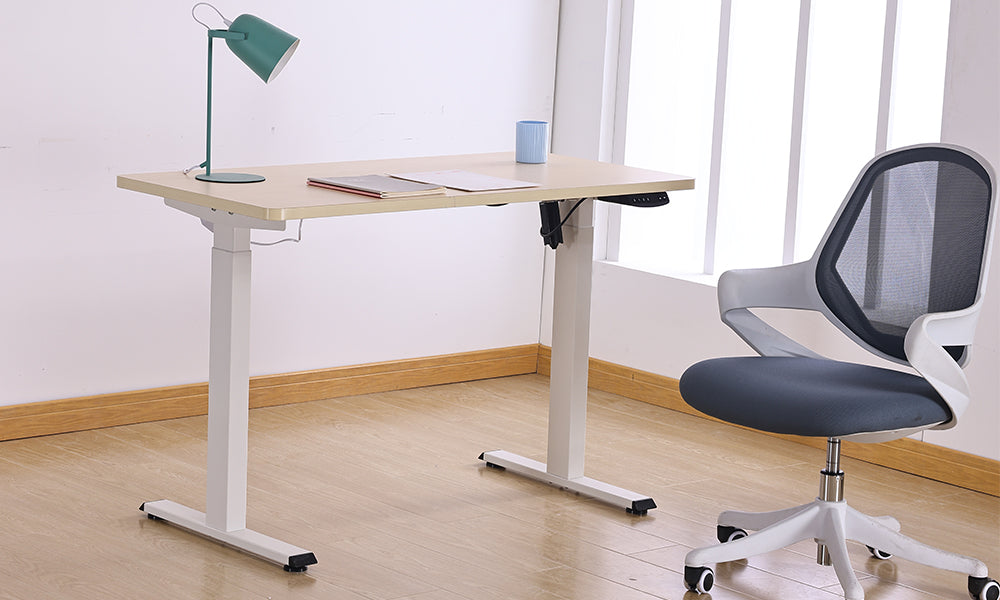As the benefits of standing desks become more widely recognized, more people are looking to make the switch from traditional seated desks. A standing desk can improve posture, reduce the risk of chronic diseases, and increase energy levels. However, with so many options available, choosing the right standing desk can be daunting. This guide will walk you through the essential factors to consider when selecting a standing desk that suits your needs and preferences.
1. Understand Your Needs
Before diving into the specific features of standing desks, it’s important to understand why you want one. Are you looking to improve your posture, reduce back pain, or simply increase your activity level during the day? Identifying your primary goals will help you prioritize which features are most important.
2. Types of Standing Desks
Standing desks come in several types, each with its own advantages and disadvantages:
a. Fixed Standing Desks: These desks are designed to be at standing height at all times. They are usually more affordable and sturdy but lack flexibility. If you choose this type, ensure it’s the right height for you.
b. Adjustable Standing Desks: These desks allow you to switch between sitting and standing positions. There are two main subcategories:
- Manual Adjustable Desks: These are adjusted by hand-crank or other manual mechanisms. They are typically less expensive but require more effort to change positions.
- Electric Adjustable Desks: These desks use electric motors to adjust the height at the push of a button. They are more convenient and often come with programmable settings but tend to be more expensive.
c. Desktop Converters: These are placed on top of an existing desk and can be adjusted to standing height. They are a good option for those who don’t want to replace their current desk but still want the benefits of a standing desk.
3. Ergonomics
Ergonomics is crucial when choosing a standing desk. An improperly set up desk can lead to discomfort or even injury. Consider the following ergonomic factors:
a. Height Adjustability: Your standing desk should allow you to adjust it to your specific height. When standing, your elbows should be at a 90-degree angle, and the monitor should be at eye level to avoid neck strain.
b. Stability: The desk should be stable and not wobble when you type or lean on it. A sturdy frame and a solid base are indicators of a well-built desk.
c. Keyboard and Monitor Placement: Look for desks that offer separate platforms for your keyboard and monitor, allowing for better ergonomic positioning.
4. Desk Size and Space
Consider the space where you’ll be using the standing desk. Measure the area to ensure the desk will fit comfortably without overcrowding your workspace. Additionally, think about the desk surface area. You’ll need enough space for your monitor, keyboard, mouse, and any other essential items.
5. Weight Capacity
Make sure the standing desk can support the weight of all your equipment. This is especially important for electric adjustable desks, as overloading them can damage the motors. Check the manufacturer’s specifications for weight limits and ensure they meet your needs.
6. Ease of Adjustment
If you opt for an adjustable desk, the ease of transitioning between sitting and standing is crucial. Electric desks typically offer smoother and quicker adjustments compared to manual ones. However, high-quality manual desks can also be easy to adjust with a little effort.
7. Build Quality and Durability
Investing in a high-quality standing desk ensures longevity and better performance. Look for desks made from durable materials like steel or solid wood. Check customer reviews and ratings to get an idea of the desk’s build quality and durability.
8. Budget
Standing desks come in a wide range of prices, from budget-friendly options to high-end models. Determine your budget beforehand and try to find a desk that offers the best value for your money. Keep in mind that while it’s tempting to go for the cheapest option, investing in a quality desk can save you money in the long run by avoiding replacements and repairs.
9. Additional Features
Some standing desks come with additional features that can enhance your experience:
a. Programmable Height Settings: Electric desks with programmable settings allow you to save your preferred sitting and standing heights, making it easier to switch positions throughout the day.
b. Cable Management: Look for desks with built-in cable management solutions to keep your workspace neat and organized.
c. Accessories: Some desks offer additional accessories like monitor arms, keyboard trays, or anti-fatigue mats that can improve comfort and ergonomics.
10. Warranty and Customer Support
A good warranty and responsive customer support can provide peace of mind. Check the manufacturer’s warranty policy and read reviews to gauge the quality of their customer service. A longer warranty often indicates the company’s confidence in their product’s durability.
Conclusion
Choosing the right standing desk involves considering various factors, from your personal needs and ergonomic requirements to the desk’s build quality and budget. By taking the time to evaluate these elements, you can find a standing desk that enhances your productivity, health, and overall well-being.
Whether you opt for a fixed, adjustable, or desktop converter model, the key is to ensure it fits your workspace and provides the flexibility and comfort you need. Investing in a high-quality standing desk is a step towards a healthier, more dynamic work environment.



































